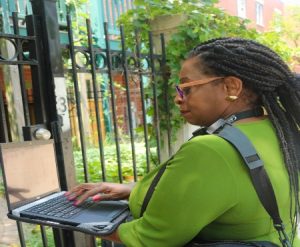Since the United States’ early history, a national census has been taken to provide a complete and accurate count of all residents. But in 1790, the U.S. was home to fewer than 4 million. Today with nearly 330 million residents, technology is critical to making this count possible.
Dell is one of the technology companies providing laptops and IT infrastructure to ensure a complete and accurate 2020 census. Using technology to drive human progress is core to who we are as a company and there’s no doubt the 2020 census is one of the ways technology impacts our lives. A complete and accurate census means the right funding allocated to programs across the country, better serving all U.S. residents.
How is the U.S. Census Bureau making the first fully digital census a reality? We sat down with the Census Bureau’s Zack Schwartz to see how the Census Bureau is driving human progress.
Steve: What are the goals of the census and how has the census evolved over the years?
Zack: The goal of the census is to get a complete and accurate count of all residents in the U.S. and its territories. This is critically important for allocation of federal money for schools, roads, hospitals and other federally funded programs. The numbers are also used for election apportionment.
One major change impacting the 2020 census is the highly mobile nature of residents, which makes technology critical. This year marks the first fully digital census—meaning it can be completed by phone, online and of course, mail.
 Tech has certainly evolved significantly since the first census, and even in the past decade. How has this impacted the 2020 census?
Tech has certainly evolved significantly since the first census, and even in the past decade. How has this impacted the 2020 census?
Tech impacts the census in ways most residents don’t even realize.
Technology has made it easier to conduct organizational activities. For example, there are hundreds of thousands of field staffers who typically meet a supervisor at a coffee shop or another common location every morning. Now they can get their assignments electronically, saving time. Enumerators collect information via cell phones and their routes are optimized to reduce mileage.
Other technologies are helping provide an accurate address list. A lot has happened in the past ten years—new construction, removal of housing, changes of businesses to residential structures and more. Satellite imagery can now help inform address list updates.
There are still tens of thousands of field staff needed to conduct address canvassing on the streets. Now instead of lugging around large paper maps they use laptops to reduce manual errors.
Why did you decide to move to a fully digital census this year?
The decision to conduct a fully digital census was made to meet our highly mobile population’s needs.
To secure responses from an ever-evolving population, we need to make the process comfortable and easy. Today, this means allowing residents to take the census on laptops and cell phones, platforms they’re used to using in their daily lives. Residents will now have the ability to see an advertisement, go to a webpage and complete forms online.
How are residents being informed about how to take the Census? What are the outreach plans?
There’s a huge national effort underway to raise awareness of the importance of the 2020 census. We’re focused on motivating people to complete the census.
Thousands of national and local events are being held to motivate people to respond, and to understand that the census is easy, safe and secure. We want residents to know their responses matter and directly impact funding in their communities.
Residents will receive invitations to complete the census online between March 12th and March 20th. You can take it online at 2020census.gov.
How will the 2020 Census accommodate people who have limited accessibility to the internet and other unique groups?
The Census Bureau has unique approaches to individual challenges, to ensure everyone living in the U.S. can take the census. For example, in one visit census workers may update the address list and complete enumeration of rural residents at the same time.
We have strategies to reach hard to count communities that may not have computer access. Working with organizations like the American Library Association, we’re putting dedicated kiosks in public libraries so everyone can take the census.
Residents can also still complete the census by phone and mail.
How can the government and private sector continue to work together to advance federal IT?
One of the biggest lessons we’ve learned working with big technology companies is that they have instituted excellent data security best practices and approaches to ensure technology meets user needs.
The private sector has invested in developing technologies the public will use. Since we have similar goals in providing secure technology to benefit the public, working together is very valuable.